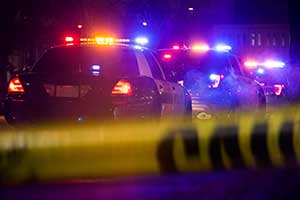Find Top Drug and Alcohol Rehab Programs in Every U.S. State
We provide a variety of treatment resources including inpatient, outpatient, free and low cost, detox and more.
Drug-rehabs.org was founded in 2002 to help individuals and families impacted by addiction, powered by compassionate altruistic individuals with extensive experience in the addiction treatment field.
Our directory is comprised of all SAMHSA listings in the United States. With over 165 years of combined experience, our devoted staff's number one goal is helping individuals find the treatment program that has the best chance for success in their personal circumstances.
If you do not need the personal assistance from our staff, use our comprehensive directory with over 25,000 listings around the country in all 50 States.
If you require or want personal assistance, we are here to help.
All Calls Are Secure & Confidential
Inpatient vs Outpatient Treatment
Both approaches offer professional support for people with addiction who are pursuing recovery. However, they have some fundamental differences. have some fundamental differences.
Read MoreCritical Things To Look For In A Treatment Program
Whether you are preparing to assist a loved one with their recovery, or seeking support for yourself, finding a treatment program that will meet your or your loved one's needs is critical to a successful recovery.
Read MoreHitting "Rock Bottom" vs. Intervention
Waiting for a loved one to hit rock bottom, while often considered an appropriate response to addiction, has inherent dangers; can be a very dark place, and some people never even get there. Helping a person with addiction find their way to recovery before they hit rock bottom can prevent much heartache.
Read More11 Vital Steps to Helping an Addict
It can take an addict years to recognize that their addiction is a problem and choose to seek help. However, when that day comes, being able to quickly, and decisively, offer effective support is essential in helping your addicted loved one begin recovery.
Read MoreDrug Rehabs by State:
- Alabama
- Alaska
- Arizona
- Arkansas
- California
- Colorado
- Connecticut
- Delaware
- Florida
- Georgia
- Hawaii
- Idaho
- Illinois
- Indiana
- Iowa
- Kansas
- Kentucky
- Louisiana
- Maine
- Maryland
- Massachusetts
- Michigan
- Minnesota
- Mississippi
- Missouri
- Montana
- Nebraska
- Nevada
- New Hampshire
- New Jersey
- New Mexico
- New York
- North Carolina
- North Dakota
- Ohio
- Oklahoma
- Oregon
- Pennsylvania
- Rhode Island
- South Carolina
- South Dakota
- Tennessee
- Texas
- Utah
- Vermont
- Virginia
- Washington
- West Virginia
- Wisconsin
- Wyoming
National Non Profit Helpline - 1-877-882-9275
Our National Non Profit Helpline is a 24/7, 365-day-a-year treatment referral and information service for individuals and families faced with mental and/or substance use disorders.
All calls are strictly confidential
Our service provides referrals to licensed treatment facilities, support groups, and community-based organizations. You don't have to struggle alone with addiction. Help is just a phone call away. Call 1-877-882-9275 now to get the help you need and deserve.






